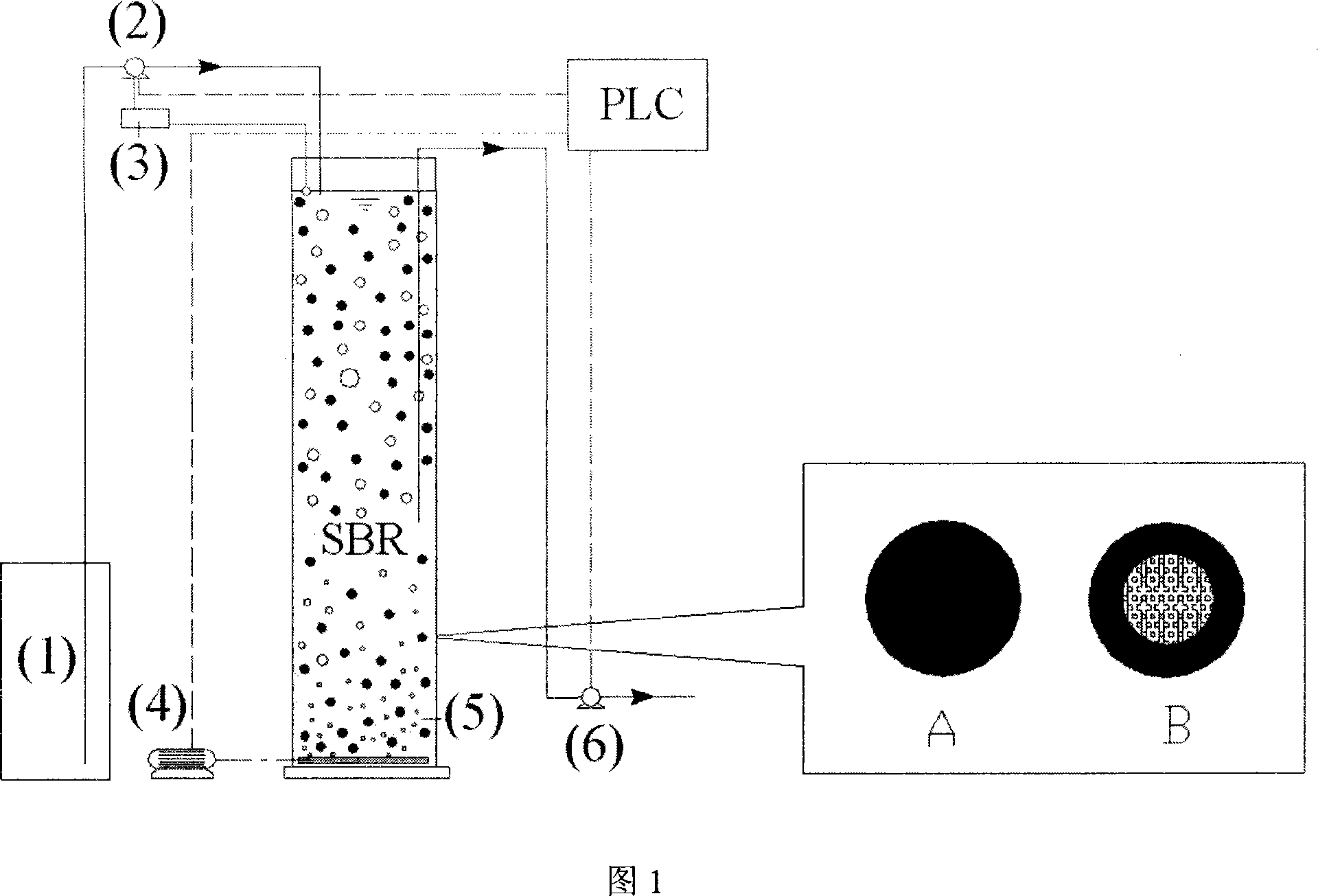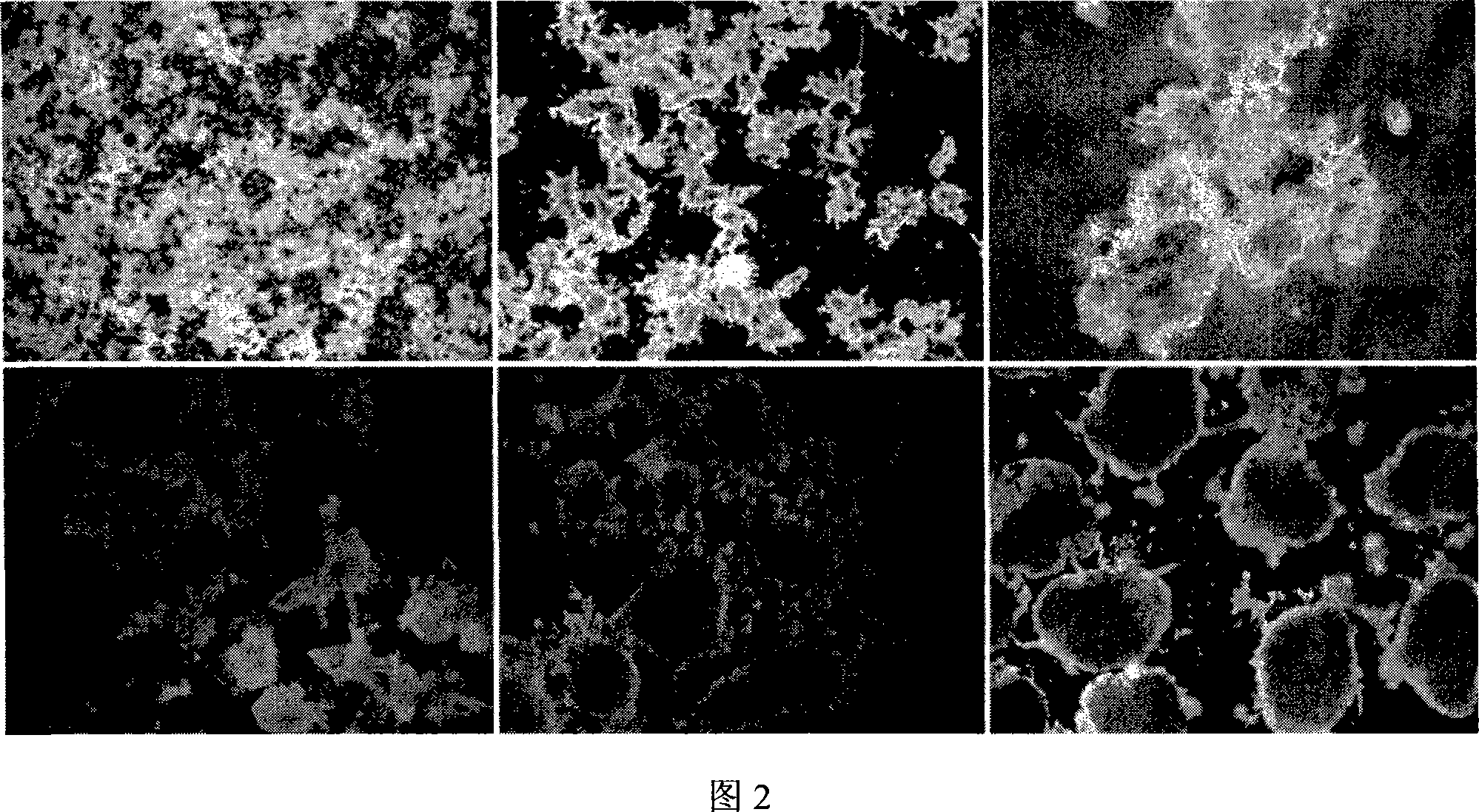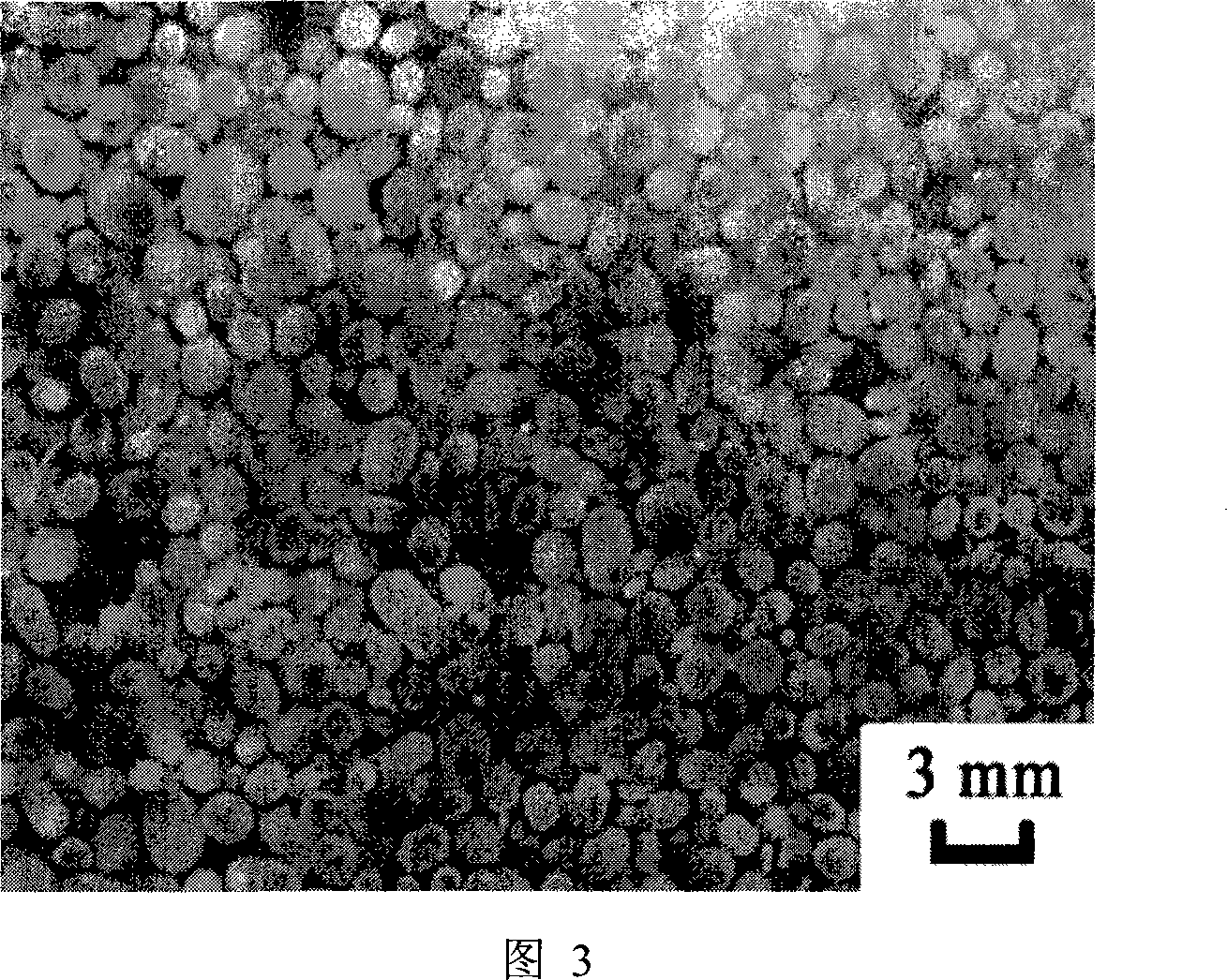Highly efficient treatment process for waster water with high content of salt
A treatment process, high salt content technology, applied in the direction of biological water/sewage treatment, water/sludge/sewage treatment, sustainable biological treatment, etc., can solve the problem of poor resistance to salinity impact, long-term guarantee of treatment effect, Low efficiency and other problems, to achieve the effect of improving the ability to resist salinity shock
- Summary
- Abstract
- Description
- Claims
- Application Information
AI Technical Summary
Problems solved by technology
Method used
Image
Examples
Embodiment Construction
[0011] Figure 1 is an enlarged schematic diagram of the aerobic granular sludge formed in the high-saline wastewater treatment device and its reactor. During the start-up period of the system shown in the figure, gradually increase the salinity of the influent. When the salinity is less than 10g / LNaCl, the gradient of each salinity change is 2g / LNaCl, and at least 8 cycles are run under each salinity condition. The aerobic sludge granulation control in the treatment system is realized under the condition that the salinity is less than 10g / LNaCl, and the granulation degree is more than 75%. When better sludge granulation is achieved in the reactor and the salinity reaches 10g / LNaCl, the gradient of each salinity increase gradually changes to 3g / LNaCl and 4g / LNaCl, and when the salinity reaches 30g / LNaCl, the salinity changes The gradient is 5g / L NaCl. The start-up period ends after the aerobic granular sludge cultivation and domestication in high-salt wastewater is achieved s...
PUM
 Login to View More
Login to View More Abstract
Description
Claims
Application Information
 Login to View More
Login to View More - R&D
- Intellectual Property
- Life Sciences
- Materials
- Tech Scout
- Unparalleled Data Quality
- Higher Quality Content
- 60% Fewer Hallucinations
Browse by: Latest US Patents, China's latest patents, Technical Efficacy Thesaurus, Application Domain, Technology Topic, Popular Technical Reports.
© 2025 PatSnap. All rights reserved.Legal|Privacy policy|Modern Slavery Act Transparency Statement|Sitemap|About US| Contact US: help@patsnap.com



